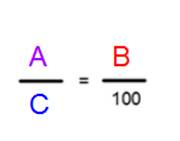A conditional statement and its contrapositive are equivalent; they are either both true or both false. The converse of a conditional and the inverse of a conditional are also equivalent. But a conditional and its converse are not equivalent. When a conditional is true, its converse may be true or false.
Let’s look at some examples:
Conditional 1: If my dog hears the doorbell, then she will bark.
The contrapositive of this statement is If my dog does not bark, then she did not hear the doorbell. Both the conditional and the contrapositve are true.
Conditional 2: If my dog hears the doorbell, then she will moo.
The contrapositive of this statement is If my dog does not moo, then she did not hear the doorbell. Both of these statements are false (and pretty silly).
Here are the converse and inverse of conditional 1:
Converse: If my dog barks, then she heard the doorbell.
Inverse: If my dog did not hear the doorbell, then she will not bark. These two statements are both false. (My dog will bark for many reasons other than the doorbell.





